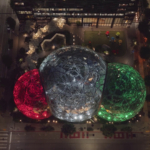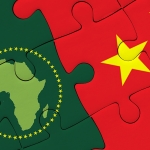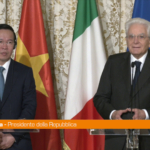On 14 February, the images captured by a satellite, showed the presence of new military installations on a small island in the Paracels archipelago in the South China Sea, occupied by China and claimed by its neighbors, particularly Taiwan and Vietnam. The island, once known as Woody on nautical charts, was annexed by Beijing in 1956 under the name of Yongxing.
It is probably two HQ-9 batteries, able to arm eight surface-to-air missiles each, with a range which experts estimate at about 200 kilometers, capable of hitting aircraft, cruise missiles and ballistic. Their deployment further exacerbates the tension along the already troubled waters of the South China Sea, the theater for several years of a territorial dispute on a large scale, with major political, strategic and economic implications, in which all the powers of the region are involved, including Japan, and the United States, determined to defend its freedom of military and commercial shipping in the area and to limit the expansionist ambitions of Beijing.
The revelation, released yesterday by the Taiwanese authorities, has angered the Chinese who, at first, have thundered against the lies of the pro-Western propaganda, and subsequently reaffirmed their right to install weapons of “self-defense” on islands inhabited by Chinese civil and military personnel, “according to international law”.
The major concern for the Americans and their allies in the area, is that Beijing brings forward a unilateral project of militarization in the region, strengthening, officially for defensive purposes, a growing number of islands and neo-artificial islands, made ex- novo by Chinese engineers through massive drainage of the sandy ocean floor, there where once there were only semi-submerged sections of the reef.
The Yongxing island in fact already have an airstrip and, in November 2015, the satellites captured the image of a Chinese military jet landed on the outpost. The missiles deployment, according to experts interviewed by the BBC, may be a warning addressed to Vietnam, which continues to advance their claims on the archipelago, and to United States, after that, in January, an American missile destroyer sailed close to the island’s shores.
For now, Beijing has avoided to deploy military installations on the disputed islands of the Spratly archipelago, far away from the Chinese territorial waters and nestled between Vietnam, Malaysia and the Philippines, who are claiming themselves its possess. If the escalation would go so far south, Chinese action would be perceived not as a simple provocation but as an explicit act of hostility, with consequences difficult to predict.
The dispute on the South China Sea was also addressed during the summit just concluded in California, between the United States and the ASEAN countries, the organization of the Southeast Asia states. Just yesterday, President Obama, concluding the meeting, reiterated the US call to stop any further “claim, new construction and militarization”, indirectly referring to Chinese activities in the area. Obama also said the US will continue ” will continue to fly, sail and operate wherever international law allows” adding that the United States will provide their support to allies in the region so that they can do the same. A support that has been explicitly called for by the Vietnamese Prime Minister during the summit. Prime Minister Nguyen Tan Dung has appealed directly to Obama to ask that the US has ” has a stronger voice and more practical and more efficient” to achieve the interruption of all initiatives aimed at changing the status quo, clearly referring to China and its constructive activities on the Spratly archipelago.
The purpose of the summit was to find new common solutions to counter Beijing’s expansionism in the South China Sea and preserve the right to free navigation, a primary geopolitical interest for the United States in that part of the world. China’s choice to deploy a missile battery on the island of Yongxing in conjunction with the US-ASEAN summit is obviously not random and tends to reiterate Beijing’s intention to dispose as they please of the territories under its control.
For Americans and its allies a military escalation, although on a minor scale, has the flavor of provocation. A US official said to the microphones of CNN that the deployment of the missiles, which occurred during the summit, was a ” further demonstration of China’s attempt to unilaterally change the status quo” in the South China Sea. On the same line is Japan, that by the mouth of Chief Cabinet Secretary Suga Yoshihide has branded as unacceptable the initiative of Beijing.
The dispute looks set to exacerbate, especially if China decides to proceed with the creation of military infrastructure on the islands under its control, going further south. Another variable in play concerns the energy and mineral resources that could hide under coral beds. Geological surveys and drilling have not started yet, at least officially, but the discovery of oil or natural gas could further jeopardize the relations between the powers bordering on that slice of ocean.
Luca Marchesini







